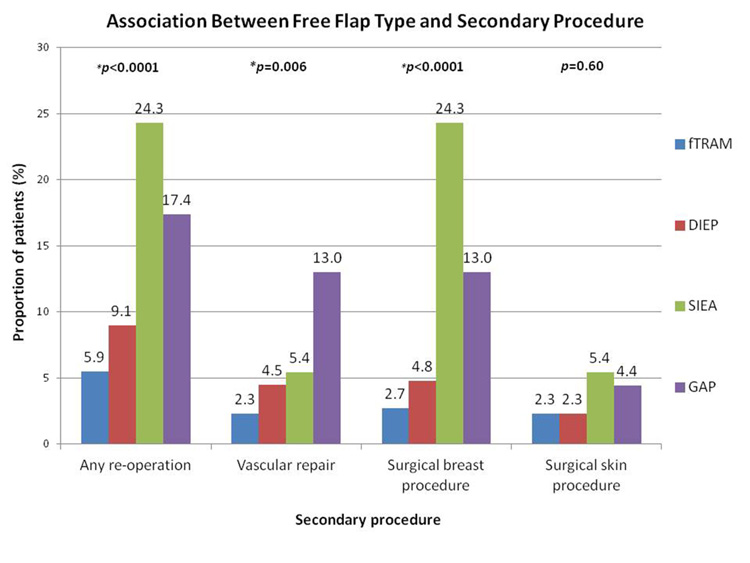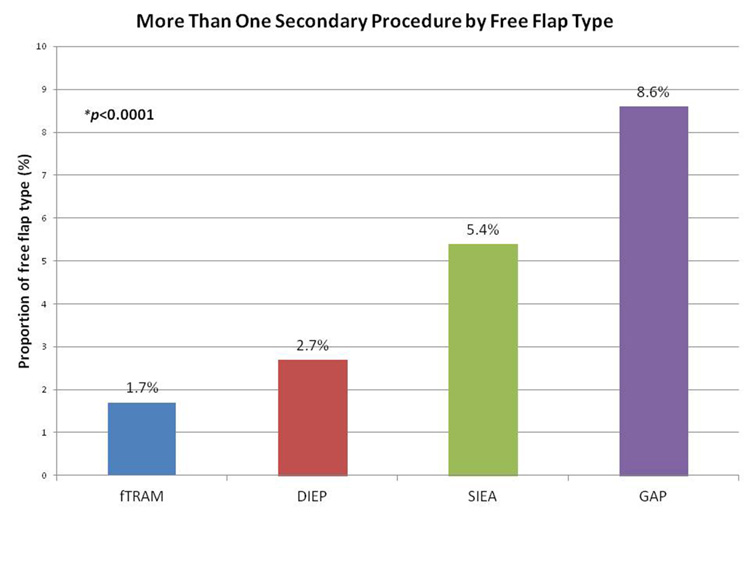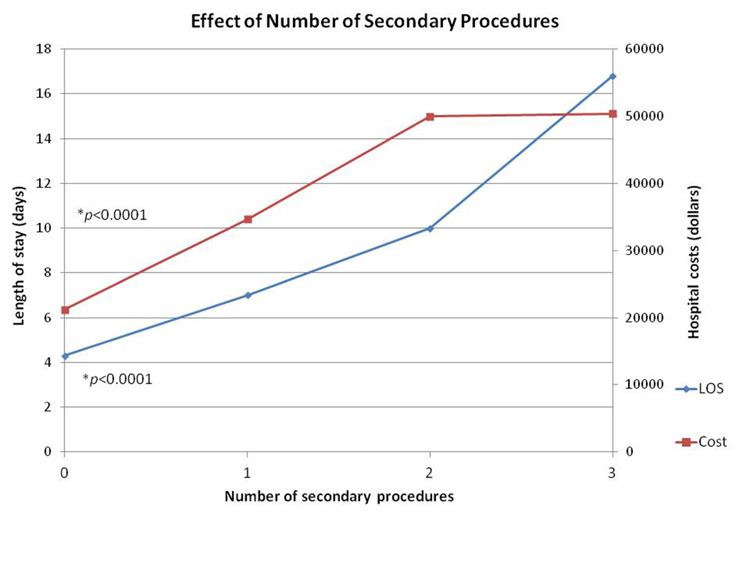|
Back to Annual Meeting
Secondary Procedures Following Microsurgical Breast Reconstruction: An Analysis of the Nationwide Inpatient Sample
Angie M. Paik, B.A., Leila J. Mady, Ph.D., Sri Ram Pentakota, M.D., M.P.H., Edward S. Lee, M.D.
UMDNJ - New Jersey Medical School, Newark, NJ, USA.
Background: Studies on microsurgical breast reconstruction often review high-volume centers that may not represent the national average. The goals of this study were to 1) report a national rate of secondary procedures (SP) during initial admission and 2) determine the impact of free flap (FF) type on SP frequency, length of stay (LOS), and healthcare costs.
Methods: We identified patients in the Nationwide Inpatient Sample (NIS) database who underwent FF breast reconstruction in 2009 and 2010. Procedures performed after initial reconstruction and attributable to reconstruction were considered SP. Statistical analysis was performed to assess the impact of FF type on SP, LOS, and hospital costs.
Results: In 2009 and 2010, the NIS registered 1,888 patients that received one free flap breast reconstruction during admission. The overall secondary procedure rate was 8.8% (n=232) with a vascular revision rate of 4.1% (n=108).
There was a statistically significant association between FF type and any SP (p<0.0001) in which superficial inferior epigastric artery (SIEA) (24.3%) and gluteal artery perforator (GAP) (17.4%) FF were associated with greater SP than free transverse rectus abdominis myocutaneous (fTRAM) (5.9%) or deep inferior epigastric artery perforator (DIEP) (9.1%) FF (Figure 1).
SIEA and GAP FF were associated with a statistically significant higher total number of procedures (5.4% and 8.6% with more than one coded procedure) than fTRAM or DIEP FF (1.7% and 2.7% with more than one coded procedure) (p<0.0001) (Figure 2).
There was a significant association with the number of secondary procedures received during admission and the length of stay (p<0.0001) and hospital costs (p<0.0001) (Figure 3).
Conclusion: In an analysis of the Nationwide Inpatient Sample in the years 2009 and 2010, following free flap breast reconstruction, the overall secondary procedure rate was 8.8% with a vascular revision rate of 4.1%. The type of free flap heavily influenced the inpatient experience, where the SIEA and GAP free flaps were associated with more secondary procedures and higher hospital costs than the fTRAM or DIEP free flaps. Our study provides nationally based statistics for patient education and evidence-based decision-making.



Back to Annual Meeting
|









